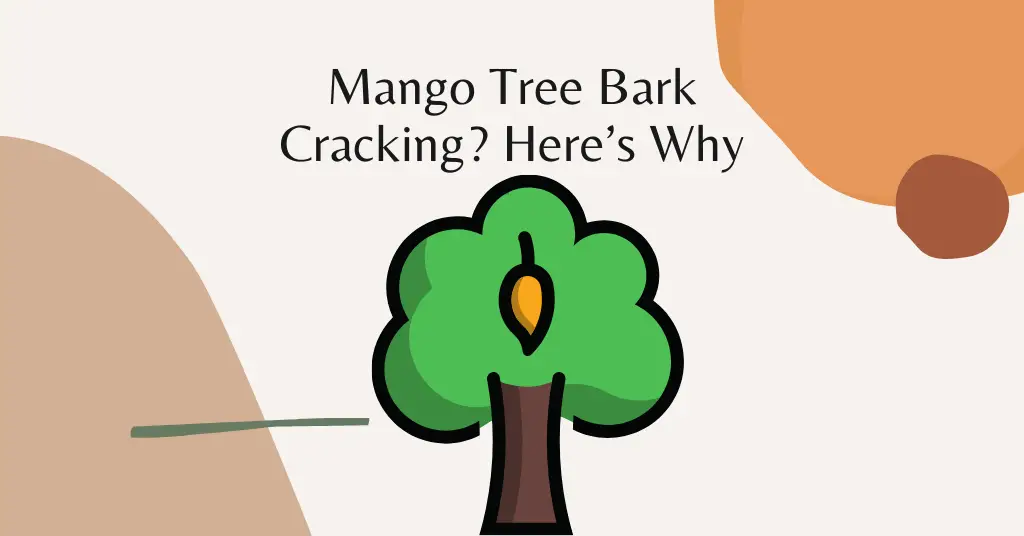I am a well-rounded expert with proficiency in several fields. My experience spans from being a dedicated chef and homemaker. As a passionate homesteader, I’ve honed my skills in sustainable living and animal care, ensuring a holistic approach to everything I undertake. Email me or Txt: (# removed due to spam, please email)
It’s not uncommon for mango tree bark to crack. This is especially true in certain types of climates where it can be very wet, then very hot and dry. So you might be worried when you see this interesting phenomenon, but should you be?

What causes mango trees to crack in the bark?
So why is my tree bark splitting? Mango trees are native to tropical regions and require warm temperatures to thrive. However, the hot direct sunlight found in these climates can also scorch the bark, causing it to crack.
This damage is most likely to occur during the hottest months of the year when the sun’s rays are strongest. In addition to cracking, the bark may also become discolored or peeled.
Heat isn’t the only thing that can damage the tree and cause this bark splitting damage. Cool temperatures below 32F will also fracture the bark.
So when we get those extreme colds in the winter and spring you can expect to see this damage as well.
Super wet than dry climates will also cause cracking due to expansion of the tree itself when wet and then shrinking of the tree when it dries out.
Cracking can also be caused by insect infestations, diseases, or even mechanical injury from being hit by a lawnmower or weed whacker, although these are less common.
Certain climates are always going to be much tougher on a mango tree than others. Wet to dry, or colder climates will have a harder time keeping your tree healthy.
As a result of these issues, it is important to take steps to protect mango trees from excessive heat and direct sunlight, as well as insulate them from temperatures that are too cold.

Is it going to hurt the tree?
Yes, A tree that is experienced severe cracking will eventually die. The bark is the tree’s defensive layer, and without its unbroken strength, it’s susceptible to all sorts of insects, diseases, fungal infections, and other problems that can cause harm.
Fortunately, if you take steps to protect your tree from these types of extreme climates, you can often prevent this damage from occurring in the first place. By working with a trained arborist who is familiar with mango tree care, you can help ensure that your trees stay healthy and vibrant.

How can you prevent mango tree bark from cracking?
So, how do you keep a mango from cracking? When in doubt, look at what commercial mango tree growers do to protect their trees.
The first step is to carefully select the right location for your mango tree, taking into consideration factors that might cause excessive heat or cold.
Additionally, you can install a protective layer around the tree like an insulated blanket that helps keep it safe from extreme temperatures and direct sunlight.
Texas growers will often use cardboard or cloth wrapped around the trunk to protect from direct sun damage, and it’s very effective and affordable.
If you are concerned about diseases or insects that may cause bark splitting, talk to your local arborist about the best ways to protect against these threats.

Fixing damage already done
There is not much you can do to fix large-scale bark cracking once it’s already happened. The best thing to do is work to prevent it from either getting worse or happening in the first place.
Luckily a small amount of bark damage won’t likely kill your tree anytime soon. The tree will attempt to grow new bark to cover the damaged areas. Trees are pretty good at self-repair of minor damages.
As a last-ditch effort, you can use commercial sealants and wraps to help protect the exposed areas, but this should be a last resort.

Will my tree still produce mango fruit?
Assuming the damage isn’t critical (it’s hard to tell because looks can be deceiving), then yes! The tree may be a bit weakened, but it should still produce fruit.
Just keep in mind that the quality and quantity of mangoes produced by a damaged tree may suffer, but will still be delicious!



